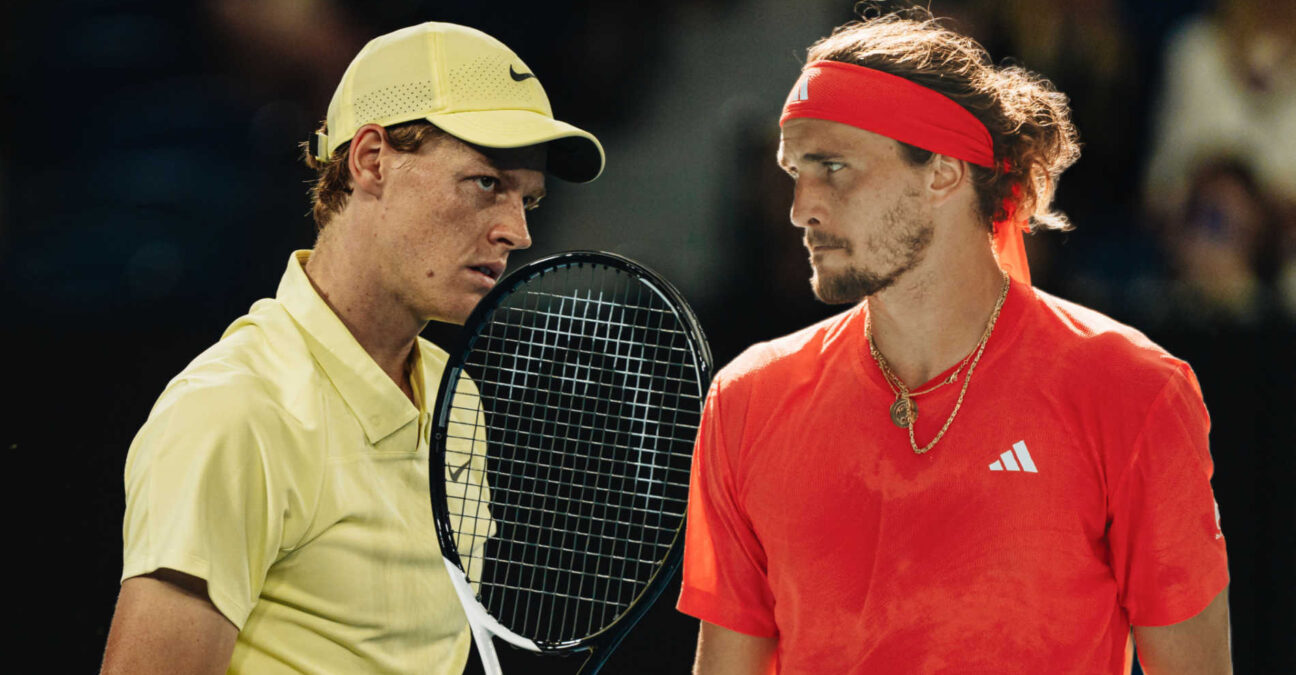Analysis: Sinner return and Zverev serve the keys to Australian Open final
Sinner has been out-serving Zverev here but their Cincinnati match last year could also be a factor
 @Julien Nouet/Tennis Majors
@Julien Nouet/Tennis Majors
The world’s top two players go head to head for glory at the Australian Open on Sunday night but you could be forgiven for thinking this one is a foregone conclusion, with most people expecting Jannik Sinner to win his third slam title and leave Alexander Zverev still hunting his first Grand Slam title.
As the world No 1 and defending champion, Sinner certainly starts as favourite but Zverev has won four of their six battles, and last year, when they played in the semis of Cincinnati, the Italian scraped by in a final-set tiebreak, going on a few weeks later to win the US Open.
This match will be won on serve, from the baseline and occasionally, from the net, depending how ambitious either man chooses to be, which is not easy when the pressure is on. Most of the exchanges will be heavy hitting baseline rallies.
Sinner has actually been out-serving Zverev here in Melbourne, winning 81 percent of points on his first serve, to the 78 percent of Zverev, while the discrepancy is even bigger on second serve, Sinner winning 62 percent to Zverev’s 56 percent.
That Cincinnati battle could be a good baseline to predict what might happen on Sunday night, even if the speed of the courts in Cincy are faster than in Melbourne. TennisViz and Tennis Data Innovations have been looking at that match and there are a few indicators that might be useful to look at.
Sinner’s return position
Normally, Sinner is an aggressive returner, standing pretty close to the baseline, as he demonstrated against Ben Shelton in the semi-final in Melbourne on Friday. However, in Cincinnati, he changed his return position, standing much deeper, as the graphic below shows.

Standing deep obviously gives Sinner a split second more time to return, negating some of the power and threat of the Zverev serve.
Sinner is also especially effective returning second serves; in this year’s Australian Open he’s tied seventh in percentage of points won, with 58 percent. And he’s taking 70 percent of his break points.
Zverev served out wide more often
However, with Sinner standing deep to return, Zverev was able to pick up a lot of points by serving out wide on the deuce court, the depth and angle enough to give him plenty of unreturned serves.
Interestingly, he didn’t use that tactic on the second serve, generally going to the middle or backhand, perhaps for safety. Much has been made of the improvement on the Zverev serve, helped by the decision to lower his ball toss, which in turn means he no longer decelerates at times, which often resulted in serves going in the net, and therefore double faults.

Zverev more often in attack
It’s probably fair to say that Zverev is a less attacking player than Sinner, but overall in the Cincinnati match, the German found himself more often in attacking positions than the Italian.
Zverev actually had the better “in attack”, “conversion” (winning points when in attack) and “steal” (changing from defence to attack) but the key factor overall was his “return performance”, vastly better than Zverev, especially in the third set.

Long match likely
Of course, what happened in Cincinnati may not have any impact on what happens in different conditions in Melbourne, a venue where Sinner feels totally at home, and where a slightly slower court plays into his hands on the return.
Zverev leads the head to head battle 4-2, which will give him confidence and the way he’s played over the past 12 months is second only to Sinner, who lost just six matches in 2024.
Perhaps the one thing that we can safely predict is that it’s likely to be long. Four of their six matches have gone the distance, including their 2023 US Open battle, which Zverev won. And three of them have only been settled by a final-set tiebreak.
Get comfortable, strap in and relax. This one could be an epic.









